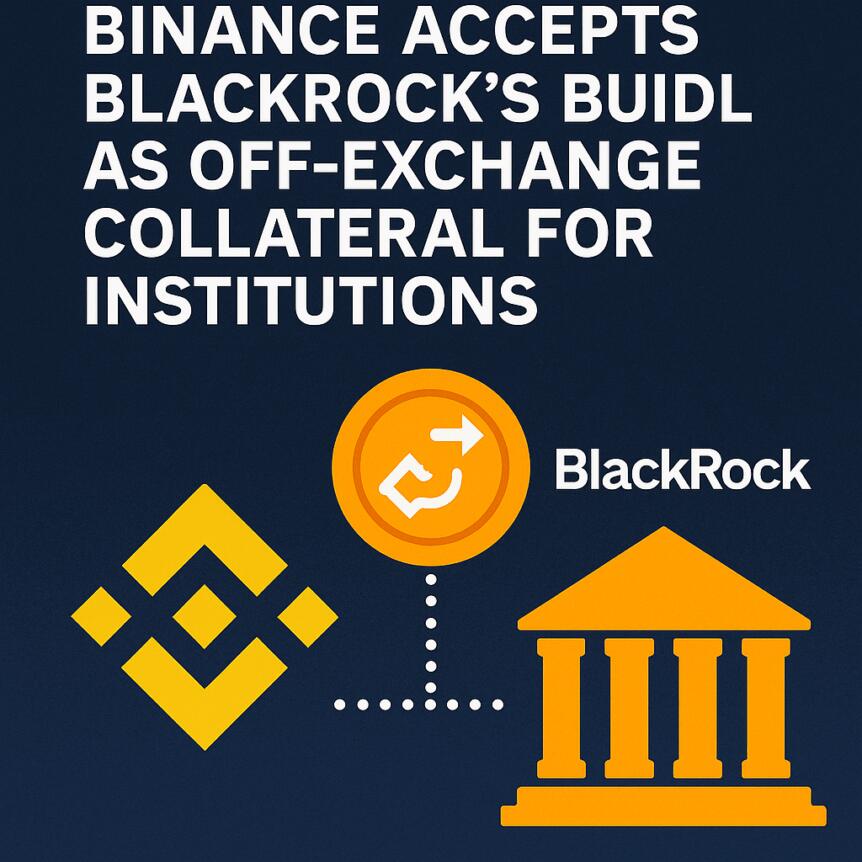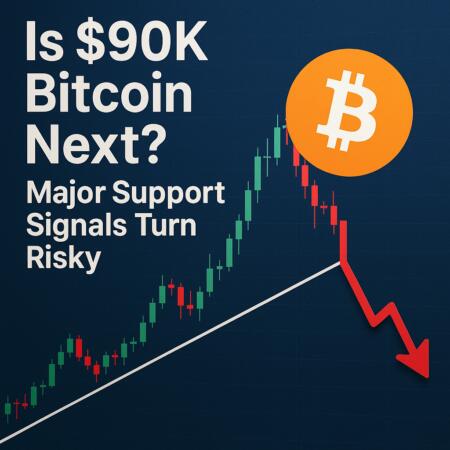- Binance has started accepting BlackRock’s BUIDL fund as off-exchange collateral, enabling institutions to trade while safeguarding assets with custodians.
- The integration allows traders to earn yield on BUIDL, expanding its use in supporting trading positions within the Binance ecosystem.
- A new tokenized asset class based on BUIDL will be launched on the BNB Chain, broadening its applicability beyond Ethereum.
- Tokenized US Treasurys and money-market funds like USYC and cUSDO are becoming mainstream collateral choices among crypto exchanges.
- Tokenized treasurys now represent the second-largest real-world asset class in crypto, with a market cap surpassing $8.5 billion.
Binance Integrates BlackRock’s BUIDL as Collateral
Binance has integrated BlackRock’s USD Institutional Digital Liquidity Fund (BUIDL) as an off-exchange collateral option, providing institutional investors a way to trade on the platform while maintaining custody of their assets. The move fuses BlackRock’s onchain money market fund, issued through Securitize, with Binance’s robust custody systems, allowing traders to earn yields on their BUIDL holdings while supporting various trading strategies.
This development is part of a broader push toward tokenized collateral, facilitating more efficient and transparent trading processes for large institutions. Additionally, Binance plans to introduce a new BUIDL asset class on its BNB Chain, extending the token’s reach beyond Ethereum and unlocking new onchain applications.
Besides BUIDL, Binance already supports other yield-bearing tokens, including Circle’s USYC and OpenEden’s cUSDO, showcasing a growing acceptance of tokenized fiat-backed assets in crypto trading. These assets serve as alternatives to traditional cash and stablecoins within increasingly sophisticated collateral frameworks.
BlackRock’s BUIDL stands out as its first onchain liquidity offering, a reflection of traditional finance’s trend toward blockchain integration. As of Q3 2025, BlackRock managed approximately $13.4 trillion in assets, emphasizing the significance of these digital assets in mainstream finance.
The Rise of Tokenized Treasurys
The acceptance of tokenized US Treasurys as collateral is transforming how institutions engage with digital assets. Across the industry, exchanges like Deribit, Crypto.com, and Bybit now accept Treasury-backed tokens, aligning with traditional financial practices where Treasurys and money-market funds are pledged via triparty systems.
Tokenized US Treasurys have become the second-largest real-world asset category in crypto, with a market cap exceeding $8.5 billion, according to RWA.xyz data. These assets are increasingly viewed as stable, low-volatility collateral, providing a crucial bridge between traditional finance and blockchain-based markets.
Among the largest funds in this sector are BlackRock’s BUIDL, with around $2.52 billion, Circle’s USYC at $1.06 billion, and Franklin Templeton’s BENJI, valued at $850 million. This trend highlights blockchain’s increasing integration with traditional asset management, paving the way for more institutional participation in crypto markets.



